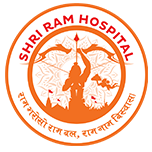
Minimizing Pain and Maximizing Recovery: A Patient’s Guide to Hernia Repair Surgery
Wednesday, 15th May 2024Hernia repair surgery is a common procedure aimed at correcting hernias—protrusions of organs or tissue through an abnormal opening in the abdominal wall. While it's a routine surgery, the recovery process can vary significantly depending on the individual and the specific techniques used. This guide provides essential tips for minimizing pain and maximizing recovery from hernia repair surgery.
Understanding Hernia Repair Surgery
Before delving into recovery tips, it's important to understand the basics of hernia repair. There are typically two types of surgery:
- Open Hernia Repair: Where a single large incision is made in the abdomen.
- Laparoscopic Hernia Repair: Involves several small incisions and the use of a camera to guide the surgery, which usually results in quicker recovery times and less pain.
Pre-Surgery Preparation
Get Informed
Discuss all aspects of the surgery with your surgeon. Understanding the procedure, risks, and expected recovery timeline can help reduce pre-surgery anxiety.
Physical Preparation
Follow your doctor’s advice regarding diet and exercise before the surgery. Strengthening your abdominal muscles might help with a faster recovery.
Plan Ahead
Arrange for help at home for the days following the surgery, particularly if you have small children or pets. Prepare meals in advance and ensure you have all necessary supplies within easy reach at home. Post-Surgery Recovery Tips
Manage Pain
Stay ahead of pain with medications prescribed by your surgeon. Don’t wait for the pain to become severe before taking medication as it is harder to manage if allowed to escalate.
Rest and Gradual Activity
Rest is crucial, but so is movement. Start walking as soon as your doctor advises to prevent blood clots and speed up recovery. Increase your activity level gradually, based on medical advice.
Wound Care
Keep the surgical site clean and dry. Follow your surgeon’s instructions for wound care, and watch for signs of infection such as increased redness, swelling, or a discharge.
Diet and Hydration
Eat a high-fiber diet to avoid constipation, which can be painful and strain your surgery site. Drink plenty of fluids unless your doctor tells you otherwise.
Follow-up Appointments
Attend all scheduled post-operative appointments. These are crucial for monitoring your recovery and addressing any complications early.
Be Patient
Recovery times vary from person to person. Don’t rush your body. Allow it to heal at its own pace.
Long-Term Care
Lifestyle Adjustments
Maintaining a healthy weight through diet and exercise can prevent the recurrence of a hernia. Avoid heavy lifting and high-impact activities until your doctor confirms it's safe.
Mind Your Body
Listen to your body and avoid activities that cause pain or discomfort in the surgical area. Persistent pain or bulging at the surgical site should be reported to your doctor immediately.
Conclusion
Recovering from hernia repair surgery involves careful planning and adherence to medical advice. By managing pain effectively, gradually increasing physical activity, and taking care of your diet and surgical wound, you can maximize your recovery and return to normal activities as smoothly and quickly as possible. Remember, each person's recovery is unique, and it’s important to follow a plan tailored to your specific circumstances.


